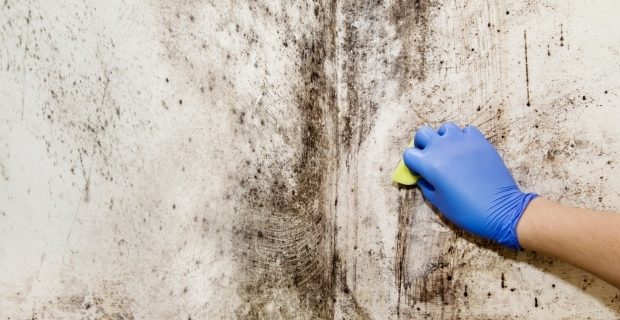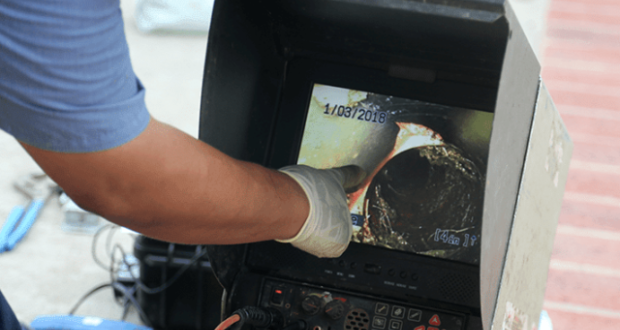The Problems With Ignoring Untreated Mold
How many times have you seen molds and reached out for cleaning materials with a sense of urgency because you didn’t just see dirt but you saw a threat to you and your family’s health? Probably never, right?
Most likely, you think it can wait until next general cleaning date. After all, molds look harmless enough for us to ignore it.
However, studies show these superficial often wooly growth on damp or decaying matters are harmful enough they can adversely affect your health.
What is Mold?
Contrary to popular belief, molds are not a type of plant. Molds are a type of fungi that grows in a thread-like structure called mold spores.
Mold spores’ size of 3 – 40 microns makes it impossible to be seen by a human eye. While it’s true some molds are beneficial to humans such as mushrooms and yeast to make bread rise, there are molds that pose harmful effects and can ultimately induce health complications.
Molds can easily breach your health. Mold can be found anywhere especially in damp, warm, humid environments such as attics, basements, crawl spaces and bathrooms.
Watch out also for areas like:
- Drywall,
- Ceiling carpets,
- Furniture,
- Ductwork,
- Roofing,
- Paneling,
- Wallpaper,
- Under sinks and
- Areas around plumbing pipes.
Types of Mold
Molds that commonly get in contact with humans are the following:
- Cladosporium – These mold spores are the primary culprit of asthma attacks caused by mold exposure. They’re widespread enough they make up 40 of the outdoor species worldwide.
- Alternaria – Individuals with bronchial asthma are likely to be more affected by these spores especially during the dry and windy season.
- Penicillium – Although it’s famous for producing antibiotic, it can also be very dangerous when it produces mycotoxins especially in food spoilage. It likes to stay in damp areas in your house and it also can trigger asthma.
- Aspergillus – People with a weak immune system are commonly afflicted with these spores since it’s not uncommon people breathe in this fungus daily.
Health Problems Caused by Molds
The molds that are usually overlooked can actually cause mild allergic symptoms to severe health problems. There are three possible routes mold spores can invade human body:
- Inhalation – This is the most common and subtle way of mold spores entering your body. Its size is tiny enough that it can bypass the filtering of your nasal hair. It lounges directly to your lungs unrestrained.
- Ingestion – This happens when you eat mold-contaminated food, consciously or unconsciously.
- Dermal absorption – Molds enter the body when absorbed by the skin or when they enter through a cut or a scrape on the skin.
Mycotoxins (myco means fungal) are some of the most dangerous toxins in existence. People with a respiratory disorder such as asthma or pulmonary diseases, weak immune system, infants, elderly and pregnant women are more susceptible to develop health problems.
Although not everybody shows severe health issues, long-term and a high dose of mold exposure are enough for the immune system to be bombarded.
Allergic sensitivity to molds is a more common occurrence than other complications since it’s the body’s initial reaction. According to experts, there are generally five common mold allergy symptoms, which are often ignored:
- Itchy nose, mouth and lips
- Sneezing
- Itchy, watery eyes
- Runny nose
- Nasal congestion
However, prolonged mold exposure disables immune system’s capacity to fight against mold causing toxins. This is when allergic reactions transform into mold infections growing in the sinuses, skin or digestive system.
Additionally, individuals with a weakened immune system can easily develop these infections despite short exposure to molds. Symptoms include:
- sinus infections,
- lung infections,
- asthma,
- earaches or infections,
- headaches,
- nausea,
- diarrhea,
- skin rashes or lesions,
- acne,
- body pain,
- chronic fatigue,
- vision problems
- and the list can go on.
Lastly, there are also symptoms that go far beyond the sneezing and the coughing, usually caused by a mold spore called Stachybotrys Chartarum. It’s commonly called black mold, technically because of its actual color.
Common symptoms of this toxic mold can include: headaches and light sensitivity, brain fog, muscle cramps, slowed reflexes, confusion and disorientation, anxiety and changes in appetite.
Avoid Mold and Avoid These Health Problems
Controlling mold growth in your house is important whether you are allergic to them or not, especially now that you know how atrocious these fungi can be to your health. To keep these molds off your house, here are some tips:
- Observe Proper Ventilation and Humidity Levels – Keep humidity level between 30% and 60%, keeping moisture away. Use an exhaust fan to provide ventilation especially on moisture-emitting kind of chores like boiling water, taking showers and washing clothes.
- Schedule Checking for Leaks and Damp Areas – Leaks can be left unnoticed unless they already interrupt your activities. Fixing certain times to address possible leaks is thoughtful enough, you are one inch away from mold-related illnesses.
- Drain Water and Clean Gutters – Don’t forget your outside environment is also a favorite spot of molds especially gutters and water containers. Regularly clean these areas to avoid mold growth.
When to Seek Professional Help for Mold Remediation
If you’re an individual susceptible to mold-related diseases (mentioned above) or if the mold infestation is greater than ten square feet, then it’s advisable you seek professional help from mold removal experts, as per Environmental Protection Agency.
Seeking experts’ help is not as hard as it seems since there can be mold professionals available near you. The latest update on the cost of mold removal services ranges from $5,000 to $6,000 but it can shoot up to $30,000 according to how extensive the mold infestation is.






